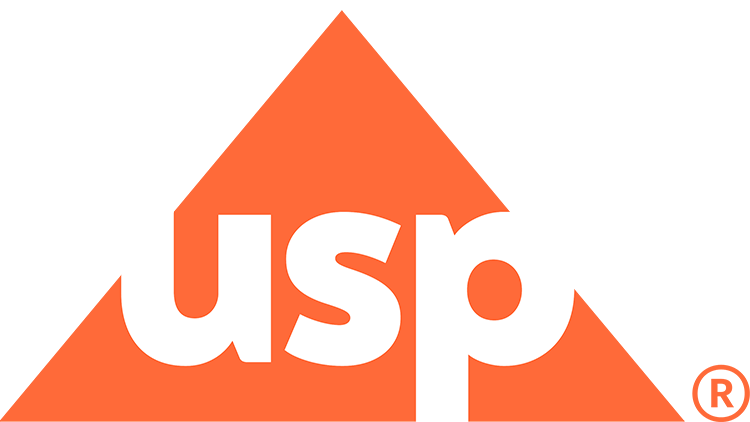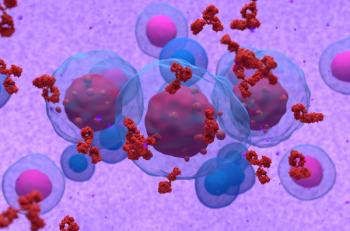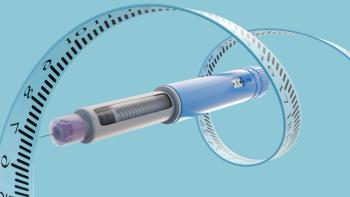
US Pharmacopeia Provides Resources to Support Supply Chain Resilience Amid Drug Shortages

Farah Towfic, PharmD, MBA, RPh, discusses how US Pharmacopeia helped to strengthen supply chain resilience in 2024 through data-driven insights, policy advocacy, and pharmacist engagement to address prolonged drug shortages, particularly for generic sterile injectables.
Pharmacy Times® interviewed Farah Towfic, PharmD, MBA, RPh, senior director, Healthcare Quality and Safety Center of Excellence, US Pharmacopeia (USP), on how USP contributed to supply chain resilience amid drug shortages in 2024. USP focused on transparency and data-driven insights to identify the root causes of shortages and collaborate with manufacturers, regulators, and policymakers to develop solutions.
Towfic also highlighted key findings from USP’s 2024 annual
USP also works closely with health systems, community pharmacies, and regulators to uphold quality standards through its 9000 public benchmarks and pharmaceutical product quality testing program. Towfic emphasized the importance of pharmacist involvement, encouraging them to engage with USP’s resources for compounding during shortages and participate in professional collaborations, such as the task force co-led with the American Cancer Society Cancer Action Network (ACS CAN). Ultimately, USP’s multifaceted approach underscores the need for broad stakeholder collaboration to build long-term supply chain resilience.
Pharmacy Times: How has USP contributed to supporting supply chain resilience in the face of drug shortages in 2024?
Farah Towfic, PharmD, MBA, RPh: As health care practitioners, we know that it's really important for patients to have access to the medicines that they need. When a shortage occurs, and a patient doesn't get the medicine that they're used to getting, we know the health care system has to invest time in finding a therapeutic alternative that will work for this patient. That alternative may not work for this patient. There's a lot of time and energy that's invested in there, and ultimately, if the patient doesn't get the medicine they need, they do not stay well.
USP has recognized that we really need to help bring transparency to deliver insights as to why products end up in shortage, and we've got to partner with manufacturers, with regulators, and other organizations, to really deliver recommendations that are based on data, based on science, to inform the public as well as policy makers around solutions for drug shortages. So that really speaks to the problem at hand. It helps us pinpoint where those areas of impact to help mitigate shortages can occur. And, as I alluded to, it's really not a single organization that can ever be expected to solve the drug shortages. So, I'll touch upon how USP has partnered with policy makers, has partnered with patient advocacy organizations, professional organizations, including pharmacy associations, to really help bring solutions to drug shortages.
So, I mentioned the importance of evidence-based data. In 2024, we released our annual drug shortages report that looks back at 2023, of course, because that's when the data were available, and we conducted the analysis in 2024. So, we used the medicine supply map and surfaced about 3 main insights that I want to share. Before I really get into those insights, I want to just do a quick refresher on what is the USP medicine supply map.
The medicine supply map is a platform that uses artificial intelligence as well as predictive analytics to identify, pinpoint, and predict potential risk within the medicine supply chain of a medicine going into shortages. So, it helps us identify those trends in drug shortages and factors that can increase a medicine's risk of going in shortage. Again, there's not a lot of data out there of what it takes to contribute to a drug shortage, so those are the insights that USP has tried to surface. So, 3 of those that I want to talk about today is that drug shortages are lasting longer. So, looking at the numbers, they're averaging about 3 years compared to around 2 years when this analysis was done in 2020. So, it's a significant duration that patients’ practitioners are having to manage drug shortages. Three years is a really long time. When a drug ends up on the shortage list, it stays there for 3 years—that's a really long period. And then second, more than half of the medicines that are in shortage were generic, sterile injectables. So, of course, there were a variety of other products, but more than half being generic sterile injectables has really shown the impact, especially on health systems, when it comes to these shortages. And then finally, the third one, economic factors, [such as] low prices really underpin many of the shortages that we saw in 2023.
So, again, no single organization can solve the many challenges of drug shortages. We know it's multifaceted. The 3 insights that I shared today demonstrates that. So we've collaborated with stakeholders, including regulators, and government officials, on policy conversations to help improve the resilience of the supply chain. So, what does that mean? We're actually co-leading a task force with ACS CAN, and this task force is urging Congress to adopt comprehensive, really holistic proposals that can help mitigate and prevent drug shortages in the US. So, this task force brings together multiple national pharmacy professional societies. They're among the membership. It also helps deliver data to them as they have their conversations with policy makers around mitigating drug shortages.
Pharmacy Times: How does USP recommend addressing the root causes of drug shortages?
Towfic: So USP recommends addressing the root causes of drug shortages through a variety of tools. We know that it's going to take multiple solutions to help really move the needle on the record number of drug shortages that we're seeing. So, one of the insights of USP’s annual drug shortage report shared is that shortages in the US are driven by economic factors—low prices that are ultimately driving manufacturers to exit the marketplace and creating these shortages. We know [that] more than half of the shortages that we identified in our report were generic sterile injectables. We know that when one of those products exit the marketplace, there's often not enough ability for other manufacturers to ramp up and help prevent a shortage. That's why they're also lasting so long [in] that 3-year period that I referenced. So, we really need to strengthen and build strategies to make the market for generic medicines financially sustainable so that patients continue to have access to these medicines.
So just 2 examples that we've iterated and helped issue some guidance to help inform decisions is around data. So that's what that annual drug shortage report is providing, it is providing data to help inform decisions so that purchasers of medicines [have] an early warning system to determine what products may go into shortage. So, some of those insights could be gleaned from USP’s medicine supply map, but we know that purchasers of medicine, and the pharmacist as well, are making the decisions to purchase. Sometimes the only information we have available to us is the price of that product. So, when we have an early warning system that can help show where a potential shortage is going to happen, we can make decisions about the therapeutic alternatives that we build into our systems.
Then second, aligning the market to incentivize quality and an adequate supply chain. So, what does that mean? This can include giving purchasers information to understand what products are more likely to be affected by supply chain disruptions. That report shows that more than half of drug shortages are really these generic sterile injectables. So that's data that can help target incentives that occur for manufacturers of those products to be able to sustain the delivery of the product to help mitigate the shortage. Of course, there are other reforms, which could strengthen manufacturing capacity, [such as what] was done throughout the COVID-19 pandemic, as we really needed needles, syringes, and personal protective equipment to help really strengthen those products on the marketplace. There was a lot of investments in bolstered manufacturing capacity.
It also includes establishing a vulnerable medicines list and just coordinating supply chain resilience and reliability efforts. So, we've worked with policymakers and other organizations to help strengthen the ability to address these root causes of the drug shortages, and we'll continue to do that work.
Pharmacy Times: How does USP collaborate with stakeholders, such as manufacturers, health systems, community pharmacies, and regulatory bodies, to improve supply chain stability?
Towfic: The stakeholders, including manufacturers, health system, community pharmacists, and regulatory bodies, they are the stakeholders that we talk with each and every day, to help understand real world challenges and the solutions that we deliver. Because, of course, if the solutions that we suggest aren't usable by the stakeholders that are out there that are patient facing, [such as] health care practitioners, and [the] manufacturers that are creating these products [or] the regulators that are helping to ensure the quality of these products… then certainly it's not a solution that's feasible to help mitigate drug shortages. So, we're always talking to these organizations.
So, what does USP deliver? We've got a portfolio of more than 9000 public quality standards that help ensure that medicines work as intended and that they're available when needed. We know that our standards are a global benchmark for quality that manufacturers and regulators have used in more than 150 countries use as benchmarks for quality. So, health care practitioners, of course, are part of our standard setting process. These 9000 public quality standards are created through expert volunteers who set our standards. So, whether through volunteering as part of our more than 800 expert volunteers who create our standards, or whether through the delivery of education, we work with the stakeholders, regulators, health systems, and others, to ensure that the standards that we put out in the world are being used as they are intended. You could have the world's best standard, and put it out there in the world, but if no one knows how to use it and if no one chooses to use it, then that standard does not deliver the solution that we at USP wanted it to. We want that standard to help facilitate a market entry, for example.
We know that when a public quality standard exists that it does help facilitate a manufacturer's entry to the marketplace, because it delivers that benchmark for quality. So, we know that manufacturers use this when it comes to adopting new technologies as well as strategies, including advanced manufacturing technologies, continuous manufacturing, when a standard exists, it can help facilitate supply chain resilience through creating geographic diversity, because manufacturers can enter the marketplace more quickly.
In 2024 we launched a new program, the USP Pharmaceutical Product Quality Testing Program, and this is currently in its pilot phase. And what this program does, it's a voluntary testing option for generic drug manufacturers. It showcases their commitment and investment in the quality of their medicines. So, what the program does is it tests products from the commercial supply chain purchase, just like pharmacies purchase their medicines, and it tests them using the scientifically validated quality testing methods, either those more than 9000 standards found in our USP national formulary, or those that are accepted by the FDA. And this provides an additional layer of information for purchasers of medicine. I mentioned earlier that sometimes the only information that a purchaser of medicine has when they're choosing to purchase a product is price. That's all that you see when it comes to purchasing a product. So, when you have additional information, like a manufacturer who's invested in quality for their product, this is an additional layer that can help strengthen and showcase the manufacturer's commitment and investment in medicine quality, and it’s an additional piece of information that a purchaser can use in order to choose a product that they carry in their in their pharmacy.
I mentioned our standards are used in more than 150 countries. So of course, that requires us to work with global regulators in sharing our scientific expertise, providing our technical support, as well as our leadership. We work with these governments to ensure that the standards that we put out into the world are being applied in a manner that helps ensure that the benchmark for quality is being met. So again, we have to collaborate with health systems, community pharmacies, regulators all around the world, and manufacturers in order to ensure the quality of these medicines.
Pharmacy Times: How can pharmacists work with USP to implement USP guidance on mitigating drug shortages?
Towfic: Pharmacists can work with us on implementing our guidance to mitigate drug shortages in a variety of ways. Of course, I mentioned our partnership in co-leading the drug shortages task force with the ACS CAN. So that's one where we've involved health systems, associations, community pharmacy associations, and other professional societies to be able to mitigate drug shortages, because we know it's not a single organization or a single regulator [or manufacturer[ that's going to really be able to mitigate drug shortages.
One solution that often arises to the top is we know that when a drug is on the FDA’s drug shortages list, pharmacists may be able to compound a version of that drug. So, we have many, many resources to support pharmacists in being able to compound safely and effectively to be able to help mitigate the impact of drug shortages. Of course, examples of this include our compounding general chapters, so our <797> sterile compounding chapter, <795> nonsterile compounding chapter, in conjunction with our <800> general chapter on handling hazardous drugs. So being able to implement the standard helps ensure that the compounded formulations that are being created to help mitigate a shortage, so that your health system, your pharmacy, can still supply the medicine that the patient needs. These can help ensure that the product that you're creating meets the quality benchmarks to ensure that these products are free of contamination, infection, or incorrect dosing. So again, it helps ensure the safety and quality of the compounded formulations.
In 2024 in October, we published the operational considerations for sterile compounding during public health emergencies guidance. And so, this is a resource that provides guidance for pharmacy compounders, those who are not registered as large outsourcing facilities. The guidance focuses on challenges that may arise during a public health emergency, such as a drug shortage, and how health systems can take advantage of the many resources that USP offers in order to help essentially mitigate a drug shortage, be able to create a compounded version of a medicine that is currently in shortage. So, examples of that include being able to utilize a monograph for a compounded product, a compounding prep monograph, in order to be able to create a compounded version of a formulation that's on shortage. It helps discuss during a public health emergency, during a time of a shortage, it often involves using different products. If you can't get the primary one that your health system, your pharmacy is used to carrying, that requires a change. Maybe you're using a different strength of a medicine than the one that you're used to carrying. We know through the Institute of Safe Medication Practices that when those types of changes happen, it can be a significant patient safety issue because the system is not used to having that particular strength on hand. So, we provide labeling, direction guidance to help inform how your health system or community pharmacy is mitigating the shortage using the compounded formulation or alternative strength of a product or even an alternative product.
So, I do encourage folks to sign up for updates to ensure that they're receiving the latest information related to compounding and other resources through our
Newsletter
Stay informed on drug updates, treatment guidelines, and pharmacy practice trends—subscribe to Pharmacy Times for weekly clinical insights.
















































































































































































































